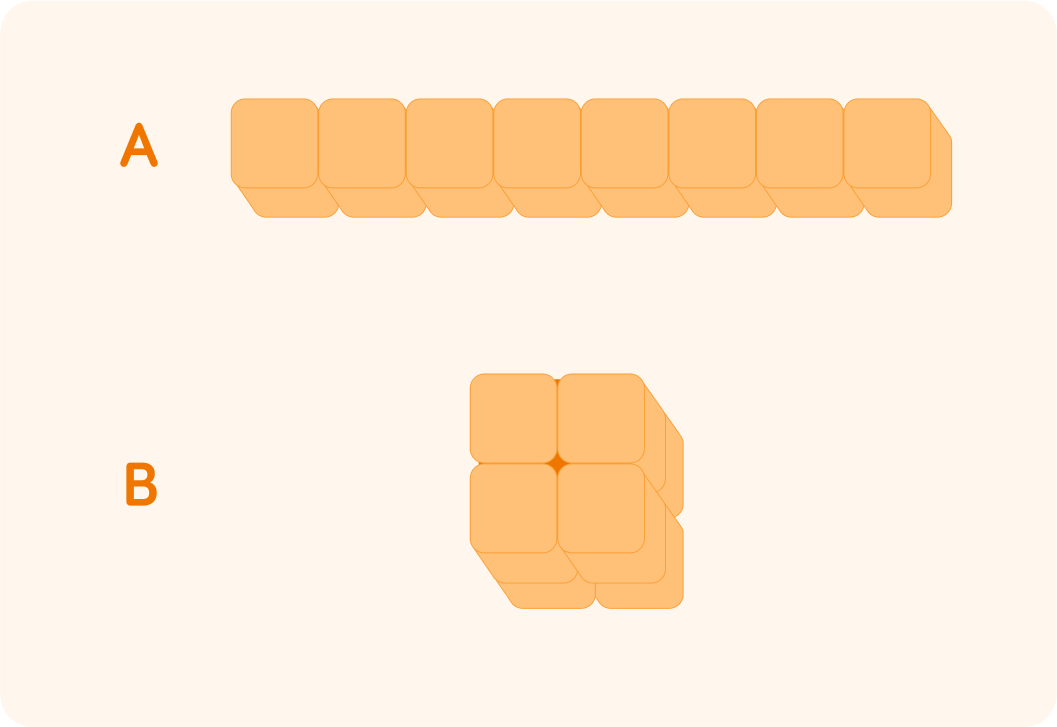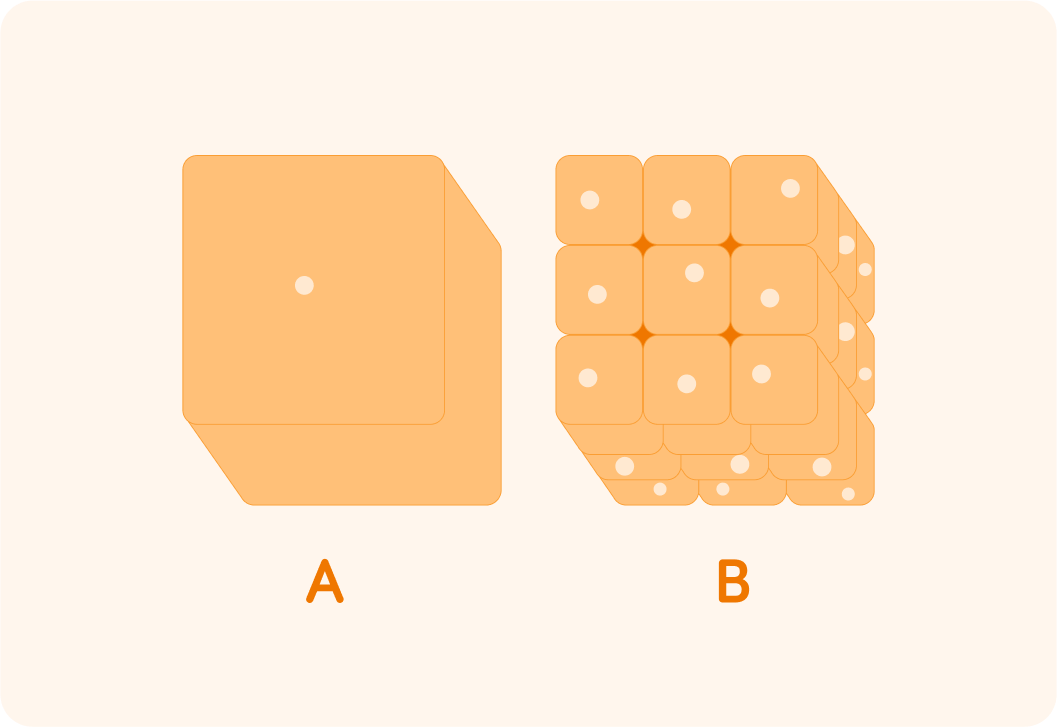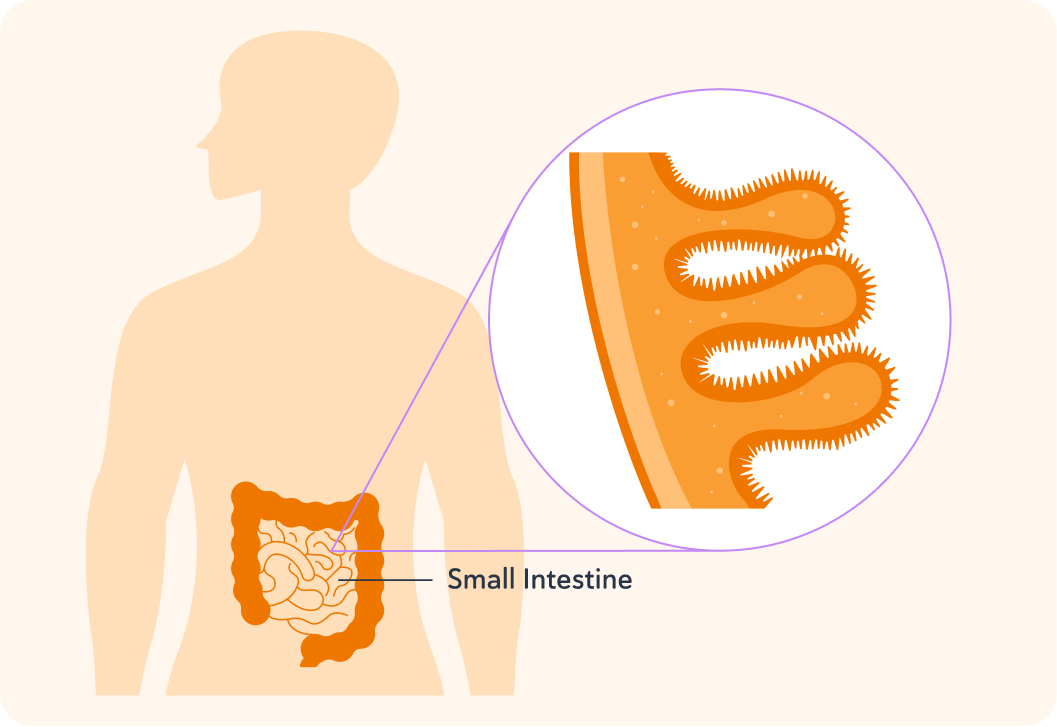YOU ARE LEARNING:
Surface Area to Volume Ratio

Surface Area to Volume Ratio
Surface area to volume ratio is a feature that varies across all organisms, which impacts diffusion and transport systems.
In this lesson we will learn how important the size of the surface area is for cells.
What is the surface area of a cell?

If we compare a big cell (A) to a smaller cell (B), which one has the most surface area? Answer A or B.


Comparing a big cell (A) and a small cell (B)...
We see that the bigger cell has a bigger surface area, but it also has much larger volume!

It's not just the size of the surface area that matters!
What really matters is how the size of the surface area compares **** to **** the volume of the cell (how much space the cell as a whole takes up). So we are not just interested in the surface area. We are also interested in the shape.

Look at these two options. A and B both take up the same amount of space (8 cubes), so their volumes are the same. Which shape has the largest surface area?
A) The long thin shape B) The block shape


If the volume is the same for both A and B, but A has a bigger surface area, then which of A or B has the bigger surface area to volume ratio?
A) The ratio in A is bigger than in B B) The ratio in B is bigger than in A C) The ratio is the same in A and in B


We calculate the ratio like this
total volumesurface area

Now look at this image.
Shape A is one big cell. Shape B is a collection of smaller cells.

Which shape has the bigger total volume?
A) Shape A has the bigger total volume B) Shape B has the bigger total volume
C) They both have the same total volume


Which shape has the larger total surface area?
A) Shape A has the larger total surface area B) Shape B has the larger total surface area C) They both have the same total surface area.


Which shape has the biggest surface area to volume ratio?
A) Shape A has the biggest surface area to volume ratio. B) Shape B has the biggest surface area to volume ratio. C) They both have the same surface area to volume ratio.


If we have a big cell (A) and compare it to a collection of smaller cells (B)...
and the two take up the same volume, the total surface area will be markedly bigger where we have a collection of smaller cells. Remember the formula total volumesurface area. If we have many small cells, the number that we divide by total volume gets bigger, so the result must also get bigger.

Which of these factors increases the surface area to volume ratio for a single cell? Pick all the options you think are correct.

You can select multiple answers
The size and shape of a cell affect the surface area to volume ratio. Small and thin cells have a high surface area to volume ratio.
Why would it be beneficial for a cell to have a high surface area to volume ratio?

If we have a cell with a volume of 5, and a surface area of 2, what is the surface area to volume ratio?

A high surface area to volume ratio allows for efficient transport. To calculate, you use volumesurface area.
If you are a unicellular organism, like a bacterium, how do you eat food and secrete waste?

Now what about humans and other multicellular organisms? How do we take in and excrete materials?

This is a picture of the small intestine.
The small intestine is a transport system.

Would you say that the small intestine has a high or a low surface area?
A) High B) Low


The small intestine is very well adapted to exchanging materials with the outside world
It's long and thin and has all of these little folds in it that increase its surface area. This means it is very efficient for absorbing food substances into the blood when we've eaten.

Which other part of the body is adapted to have a high surface area to volume ratio do you think?

Actually, what do you think the surface area might be of your lungs?

Lungs, gils, leaves, the small intestine and plant roots are all examples of transport systems for exchanging materials, like gases or food substances. These organs are very well adapted for exactly this purpose, because they all have very high surface area to volume ratios, so lots of exchange can happen at the same time.
Think about all the little pockets inside your lungs for example. It is estimated that when we take them into account, the total surface area of your lungs is between 50 and 150 square metres!
